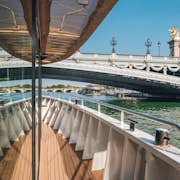

 }})

Exhibition
28 Nov 2024 — 28 Mar 2025
The Paris Opera's stage jewelry, made from brass, colored glass, and rhinestones, creates an illusion of luxury.
Despite the simple materials, the craftsmanship is impressive.
1 option


Combine Opéra Garnier with other Paris favorites. Some things are better together.
This 19th-century architectural masterpiece was built by Charles Garnier at the wishes of Emperor Napoleon III. It's located at the Place de l'Opera, a square in Paris's 9th arrondissement.
The insides of the Opéra Garnier boast some stunning Beaux-Arts architecture, like the 30-m high marble Grand Staircase. Its intricate interior inspired Gaston Leroux's 1910 novel The Phantom of the Opera (and thus Andrew Lloyd Webber's smash-hit musical), making this the perhaps the most famous opera house in the world.








